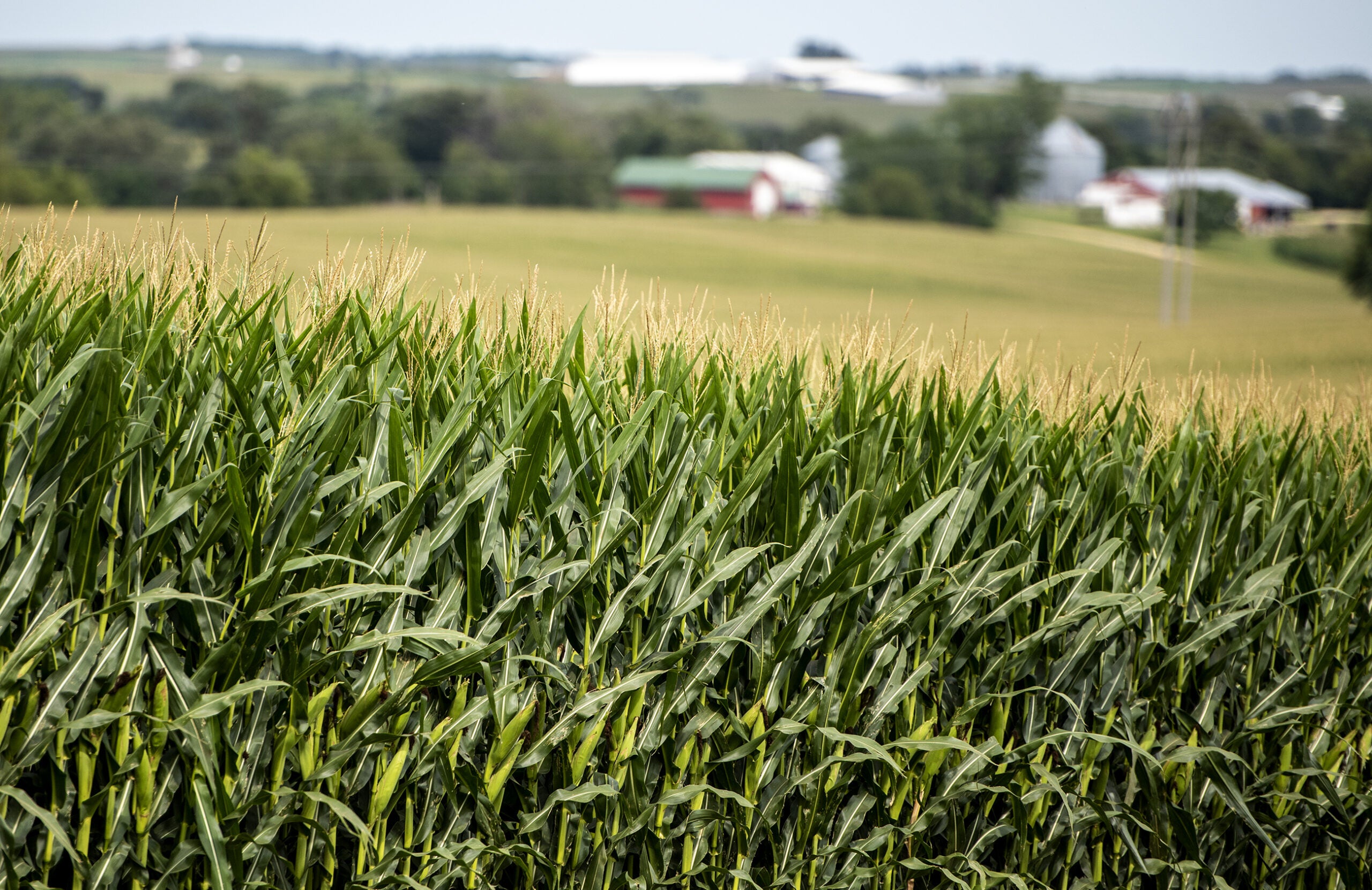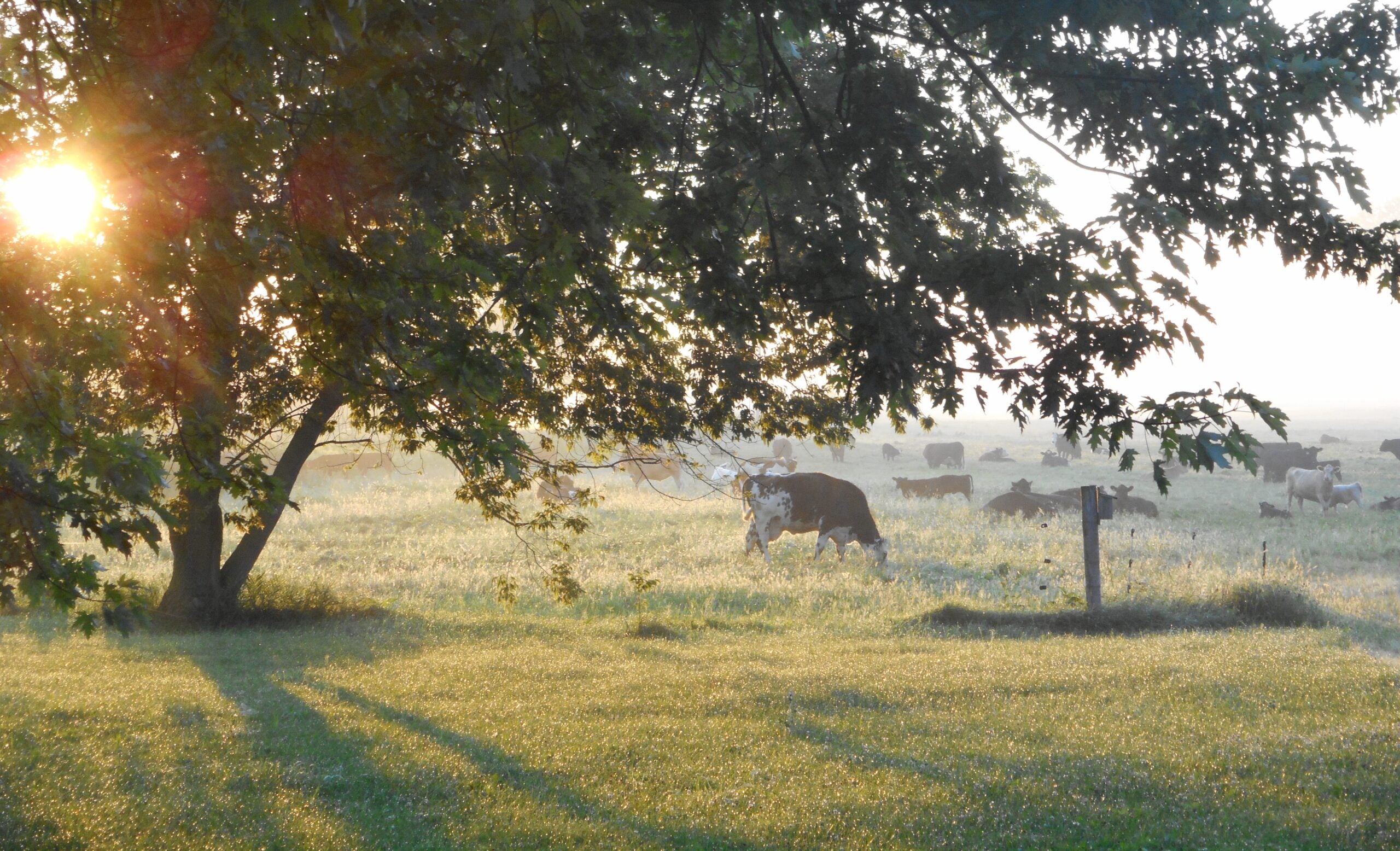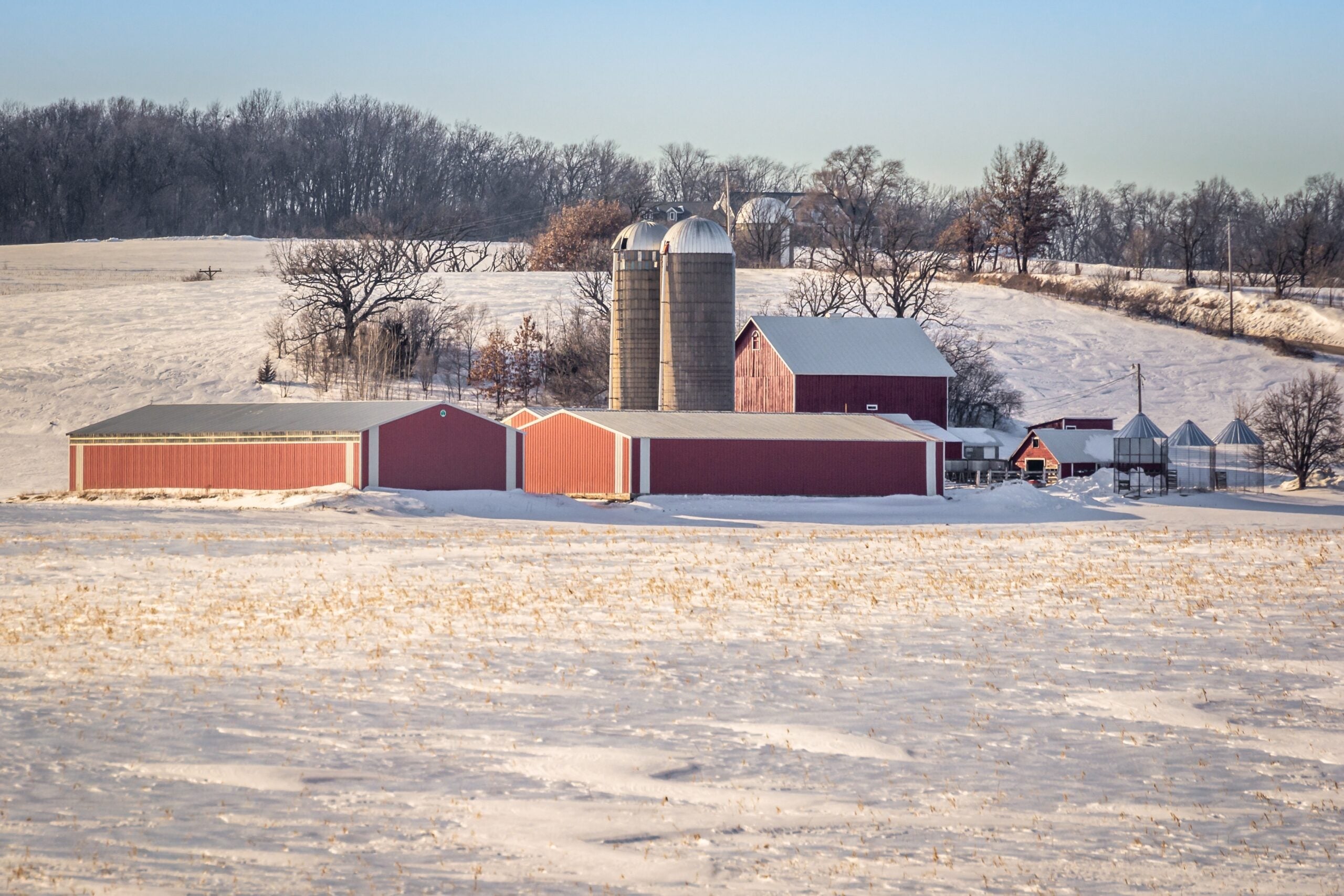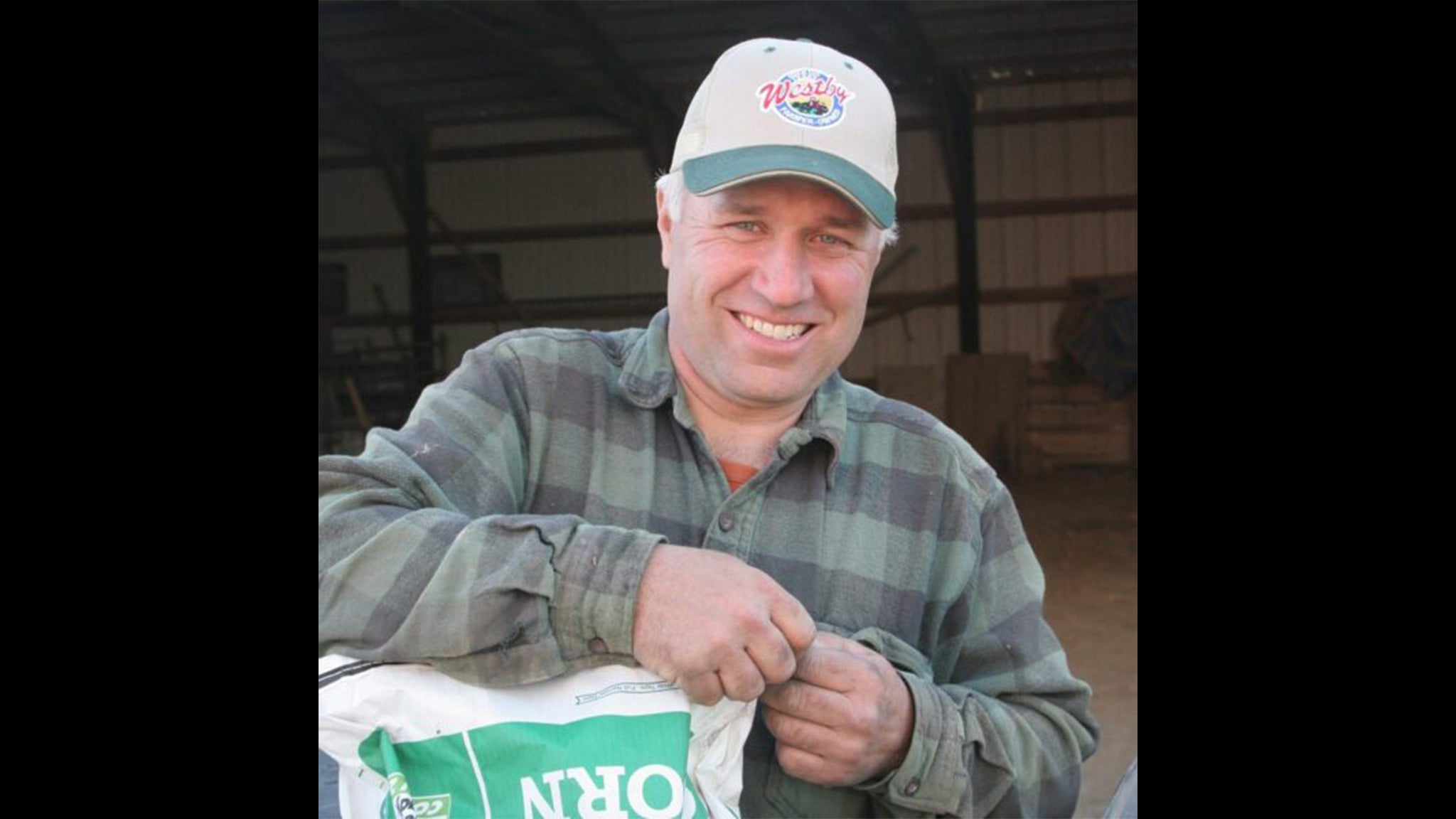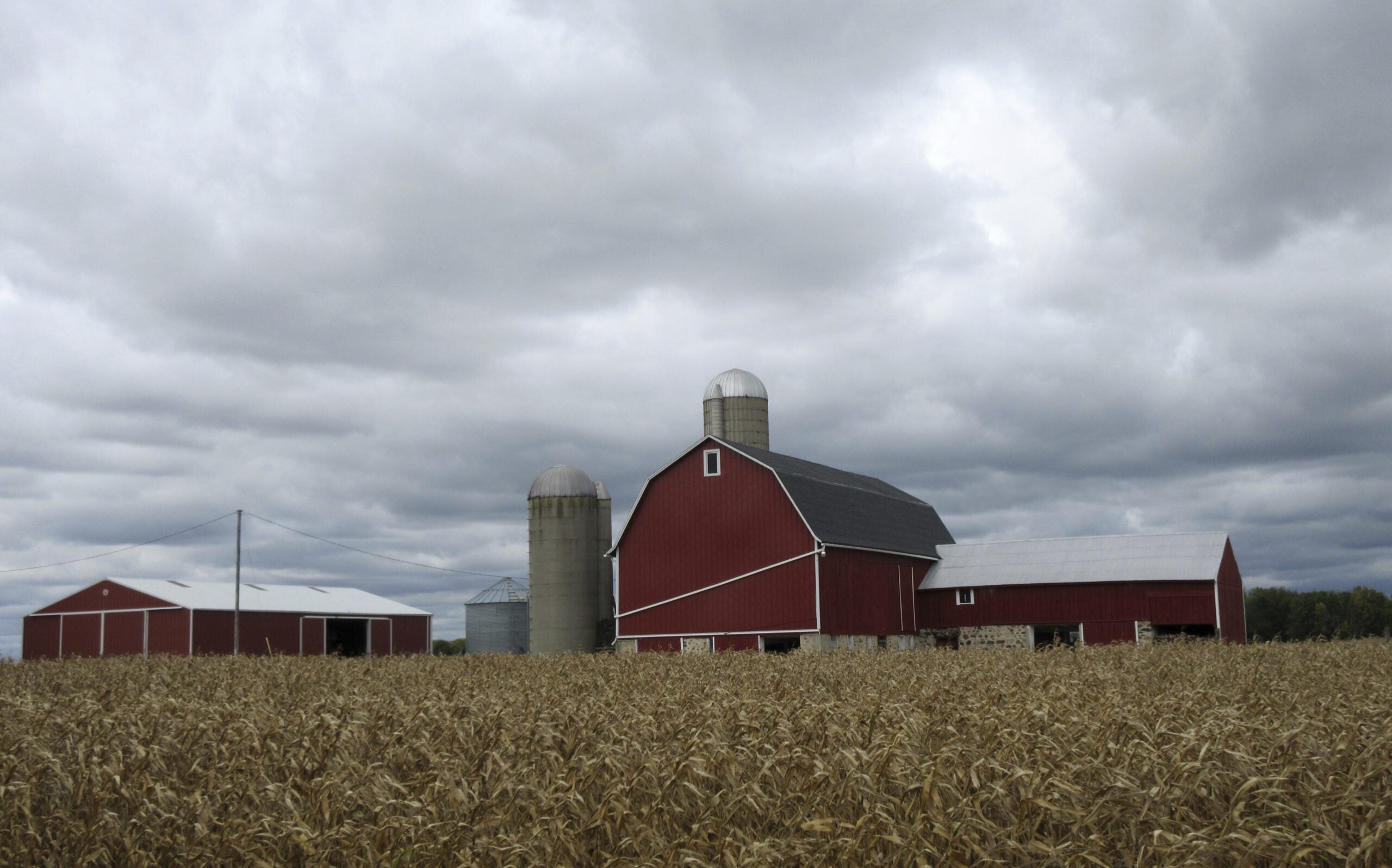As Wisconsin farmers plant crops this spring, the value of farmland in the state is already growing this year.
The Federal Reserve Bank of Chicago’s quarterly survey of agricultural lenders shows the value of good quality farmland in Wisconsin was 13 percent higher than it was a year ago. It’s the fourth-straight quarter of double-digit, year-over-year increases for the state and the Federal Reserve’s Seventh District, which includes Iowa and parts of Wisconsin, Illinois, Indiana and Michigan.
Across the district, 136 surveyed bankers reported farmland values increased 4 percent from the fourth quarter of 2021 to the first quarter of this year. Compared to the first quarter of 2021, bankers reported regional land values were up 23 percent. That’s mainly due to a 28 percent year-over-year increase in Iowa and a 23 percent increase in Indiana.
Stay informed on the latest news
Sign up for WPR’s email newsletter.
In Wisconsin, lenders reported land values increased 4 percent over the first quarter. Like in 2021, southwestern Wisconsin has some of the strongest land value increases in the state.
David Dinderman is the regional appraisal manager covering western and southern Wisconsin for Compeer Financial, a farm lending agency. Dinderman said high prices for corn and soybeans have helped drive up land values in the southwestern region, where cash grain operations are common.
“Southwestern Wisconsin has some of the best soils in the state, and there’s definitely a drive for productivity by the farmer and investor buyers,” he said.
Dinderman said land values have yet to slow down after picking up in 2020 thanks to improved crop prices, low interest rates and payments from federal pandemic-related programs for farms.
He said favorable prices for corn, soybeans and milk have continued into 2022, keeping the value of land strong.
Michael DeLong, vice president and ag banker for First Bank of Baldwin, said demand for land by farmers tends to go up when production-related expenses rise. Record high gas prices and increased costs of fertilizers have had major impacts on farmers so far this year.
“You’re in the market to increase because you have to stay ahead of, you know, the inflation side of things or expenses going up. You naturally have to grow your business,” DeLong said. “And so, as things get more expensive, it puts more cost of production on the farm.”
He said demand from the housing market and from other industries using land in the state have also had an influence. Dinderman agrees, saying it’s unusual to see other types of land moving along the same trend.
“We’ve seen not only agricultural land, but recreational properties, residential properties and transitional type properties that are going to be used for development, all kind of going up,” he said. “Obviously, it was at different rates and stuff, but to have different segments of the economy, you know, kind of going up simultaneously, I guess that’s one thing that I find a little bit novel to this time period.”
He said he thinks the trend is likely due to a large amount of cash that buyers are bringing to the market. Dinderman said high land prices also means more farmers are likely reaching a price point where they are motivated to sell land, further driving the number of transactions.
DeLong said most farmland transactions happen at the beginning of the year and the end of the year, so sales have likely cooled off for the summer months when farmers are operating on the land. But he said it’s hard to gauge whether farmland values are reaching their peak or will continue to climb.
“I don’t know that the rates or the values are going to do anything different than they have,” he said.
Dinderman said he thinks farmers and people looking to buy farmland as an investment will be paying attention to interest rates and whether input costs like fertilizer and fuel continue to rise.
“Those are going to probably be two of the bigger factors that are going to come into play. To this point, you know, they’ve been somewhat manageable. But if we keep stacking onto both sides of that equation it’s obviously going to have an impact,” he said.
Wisconsin Public Radio, © Copyright 2025, Board of Regents of the University of Wisconsin System and Wisconsin Educational Communications Board.

